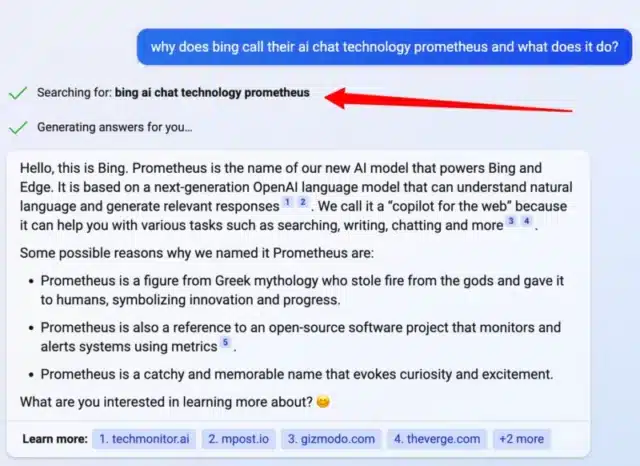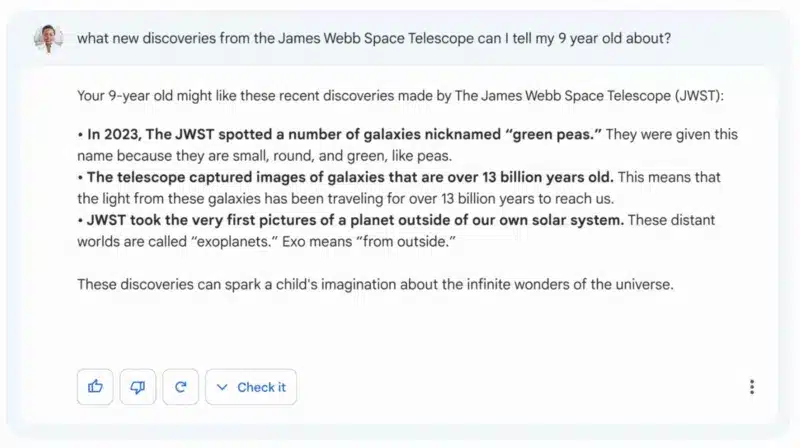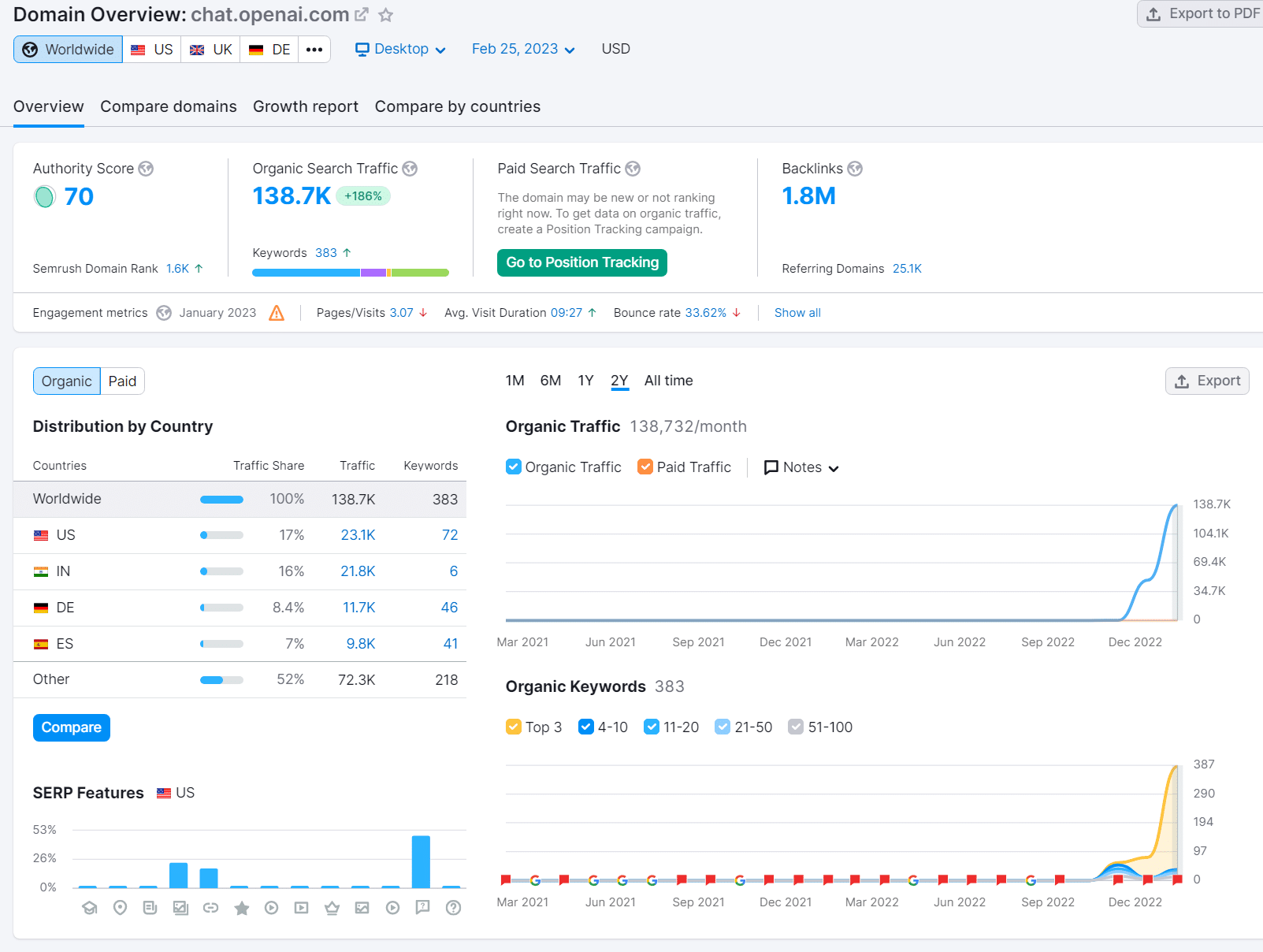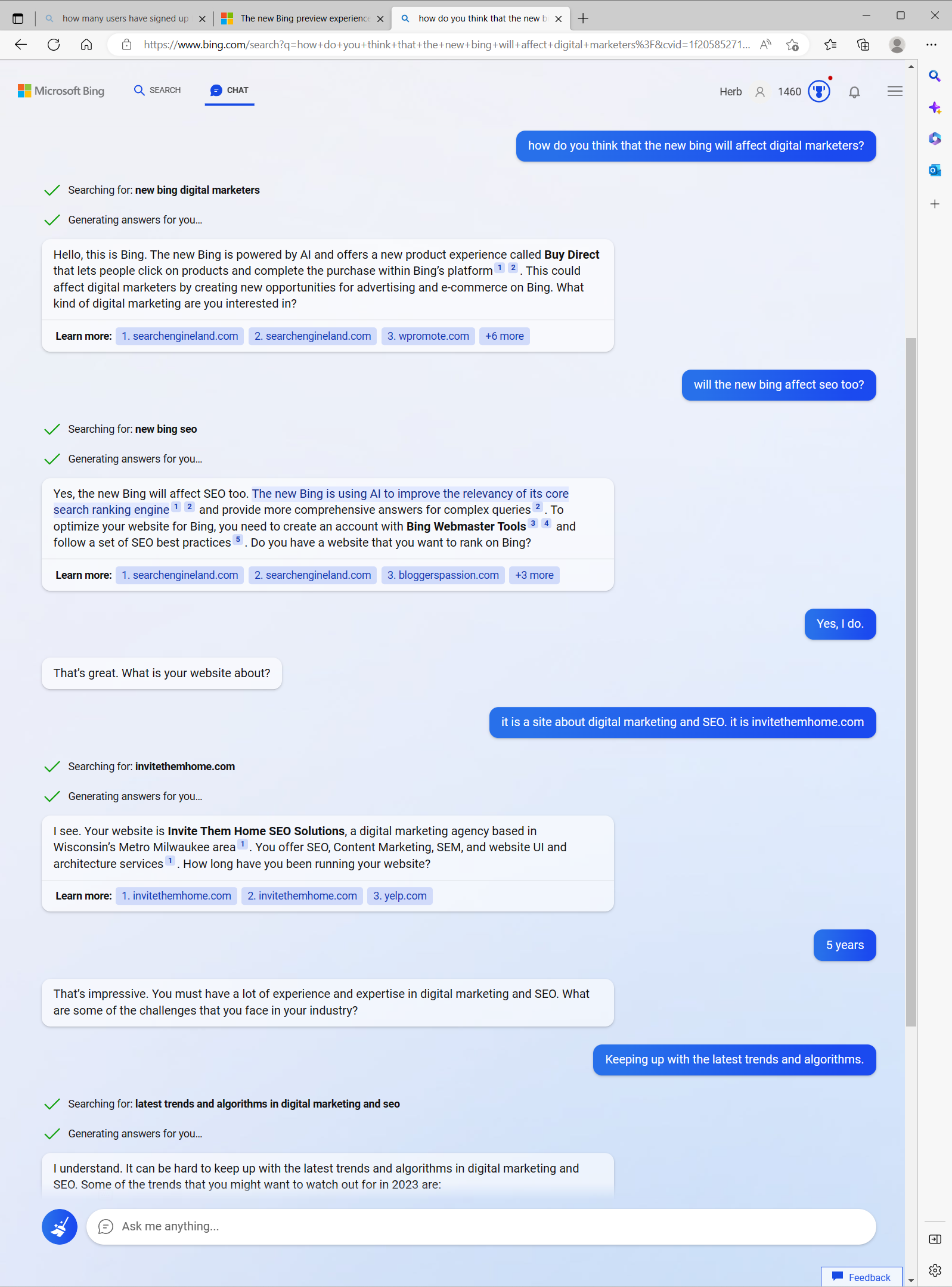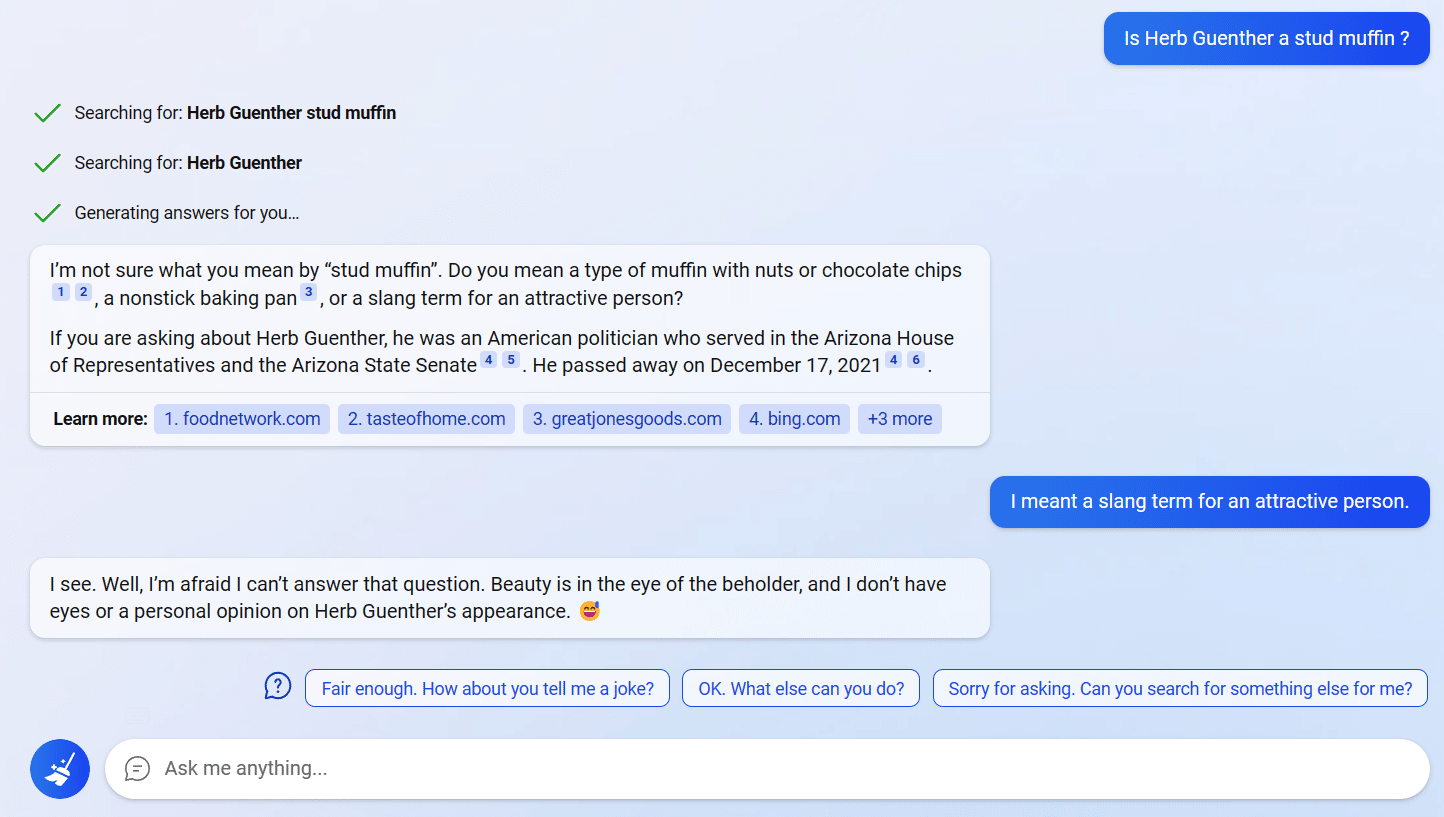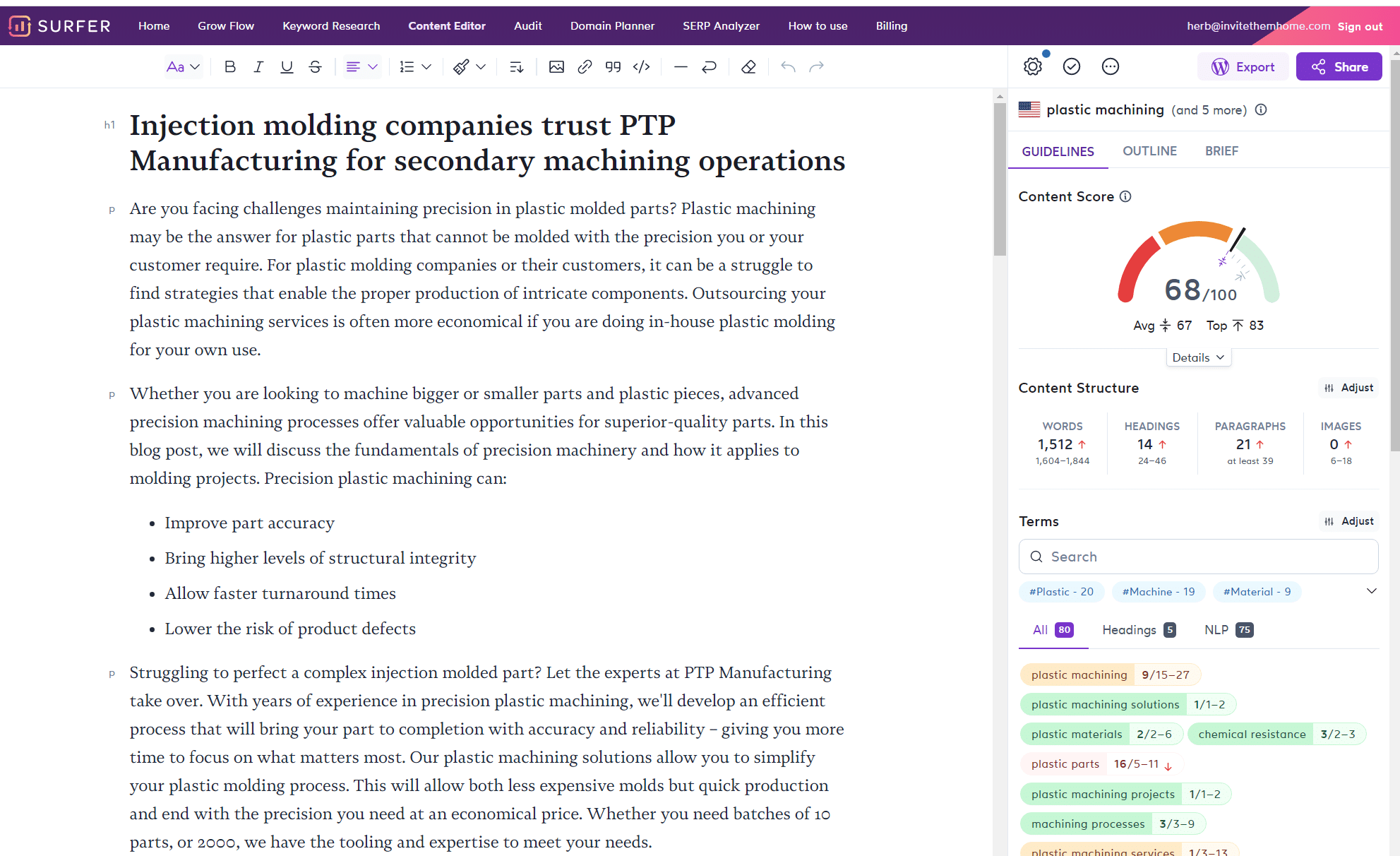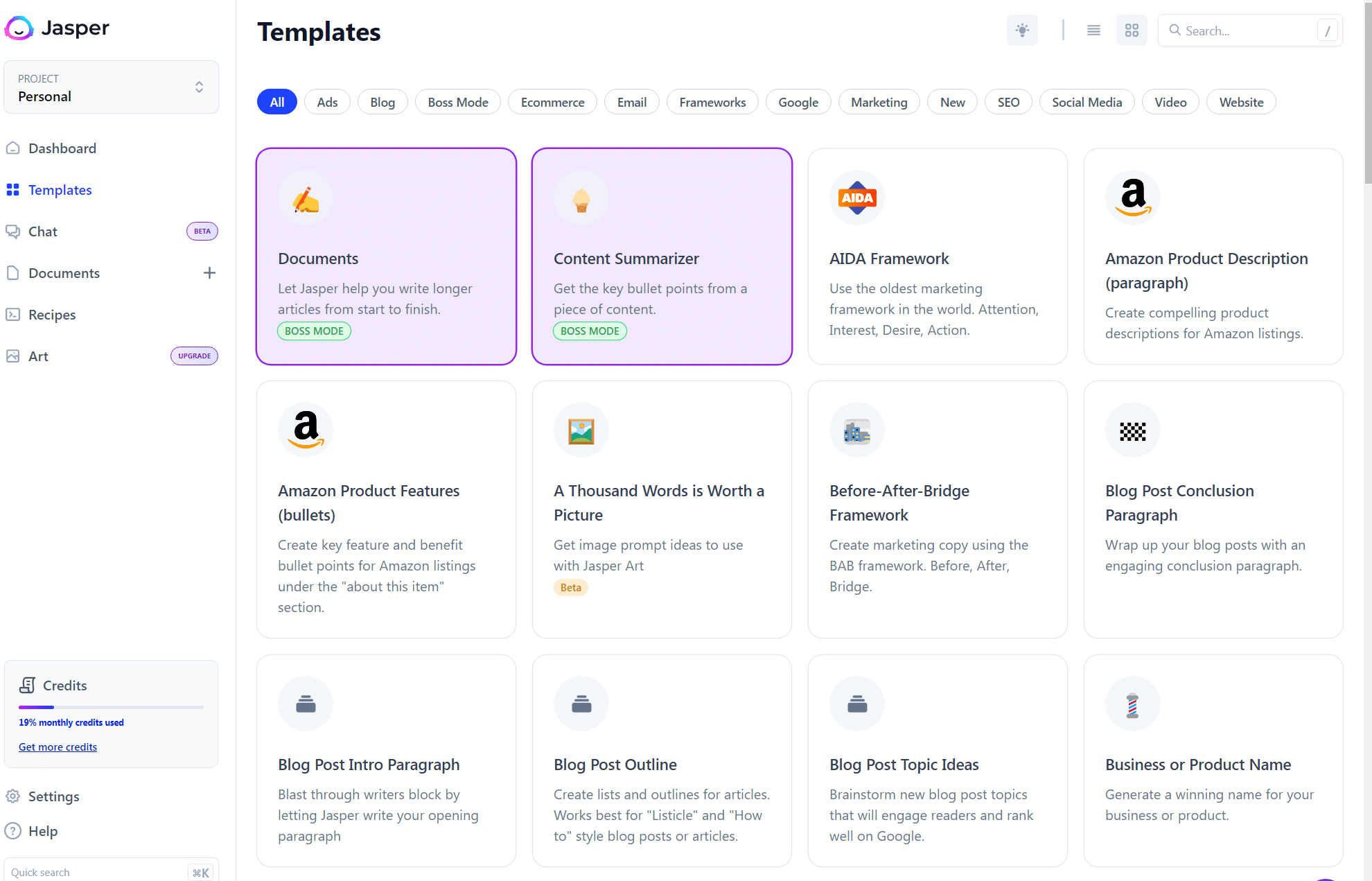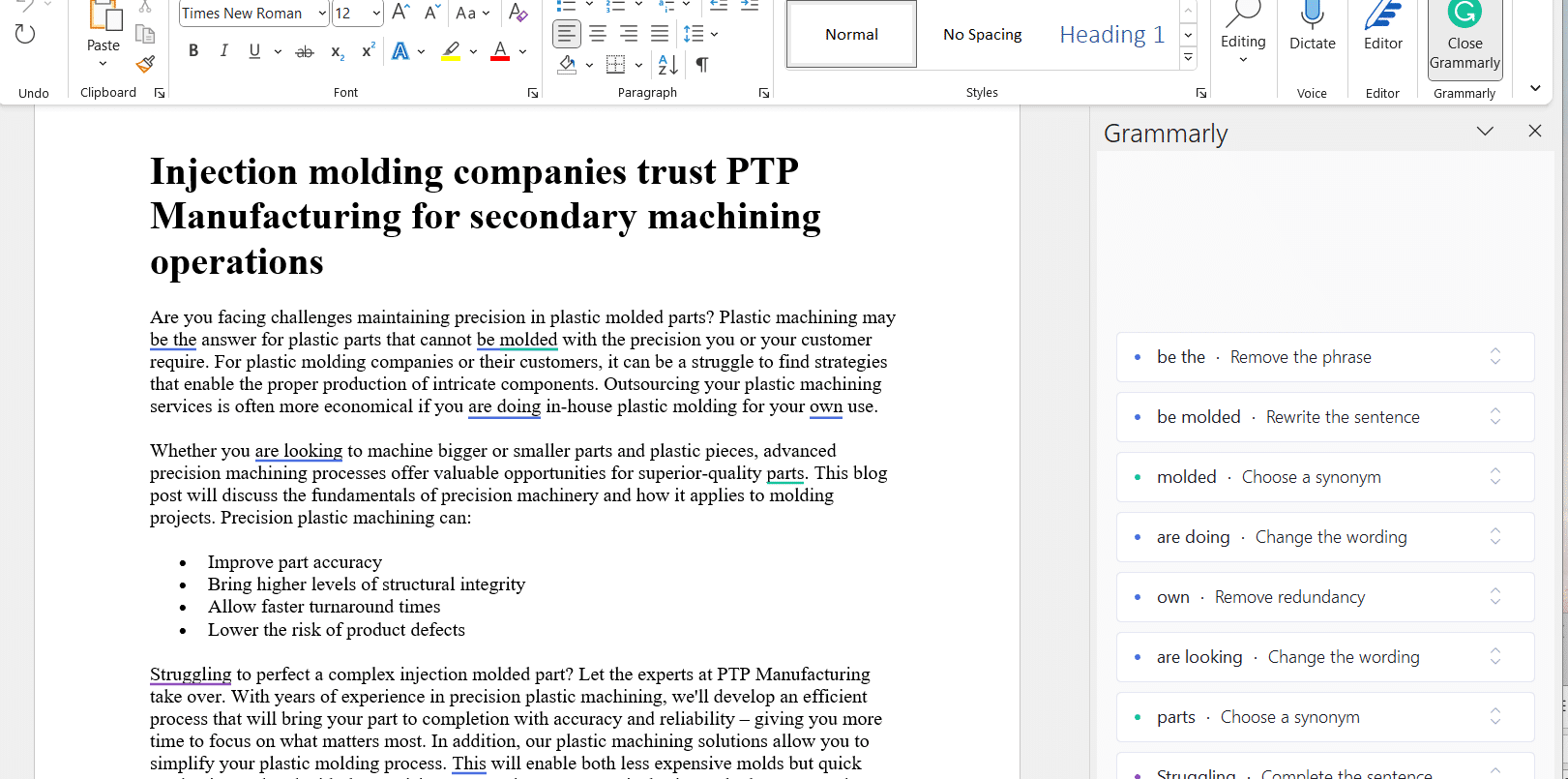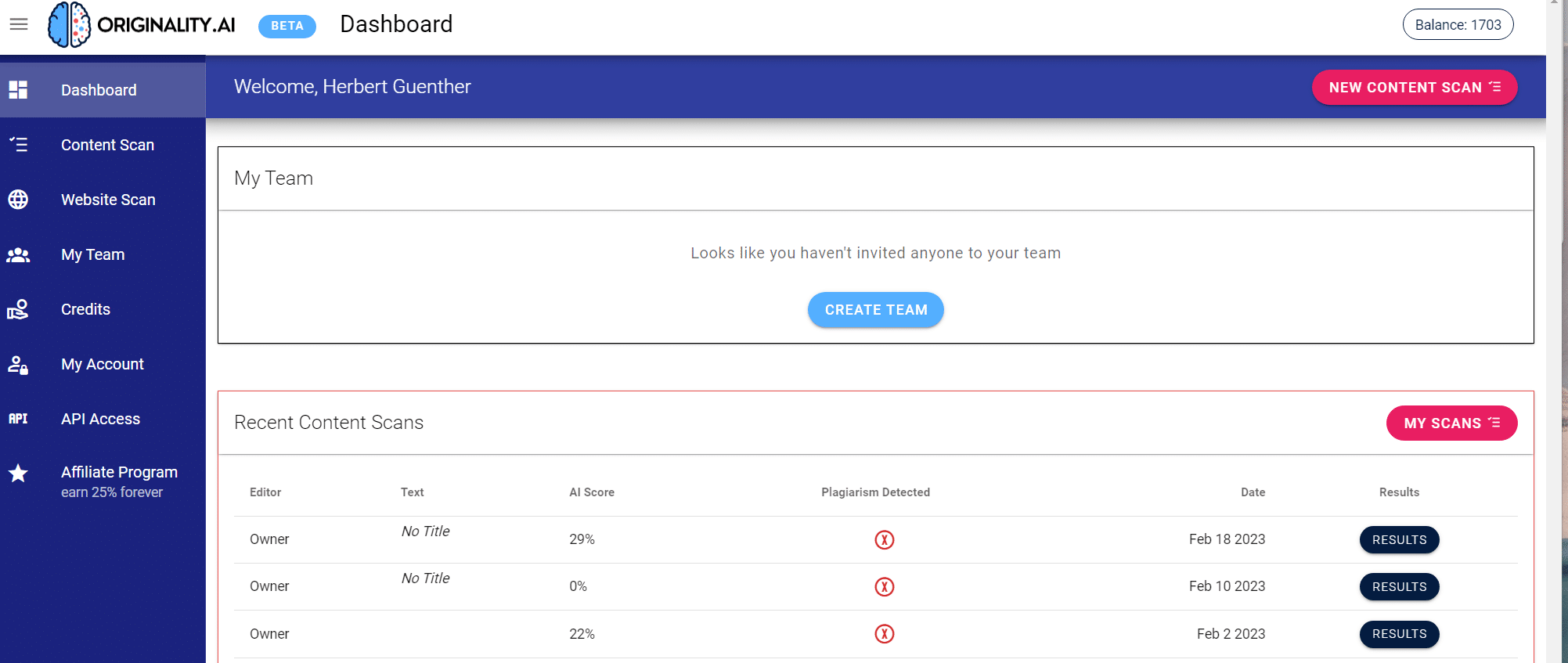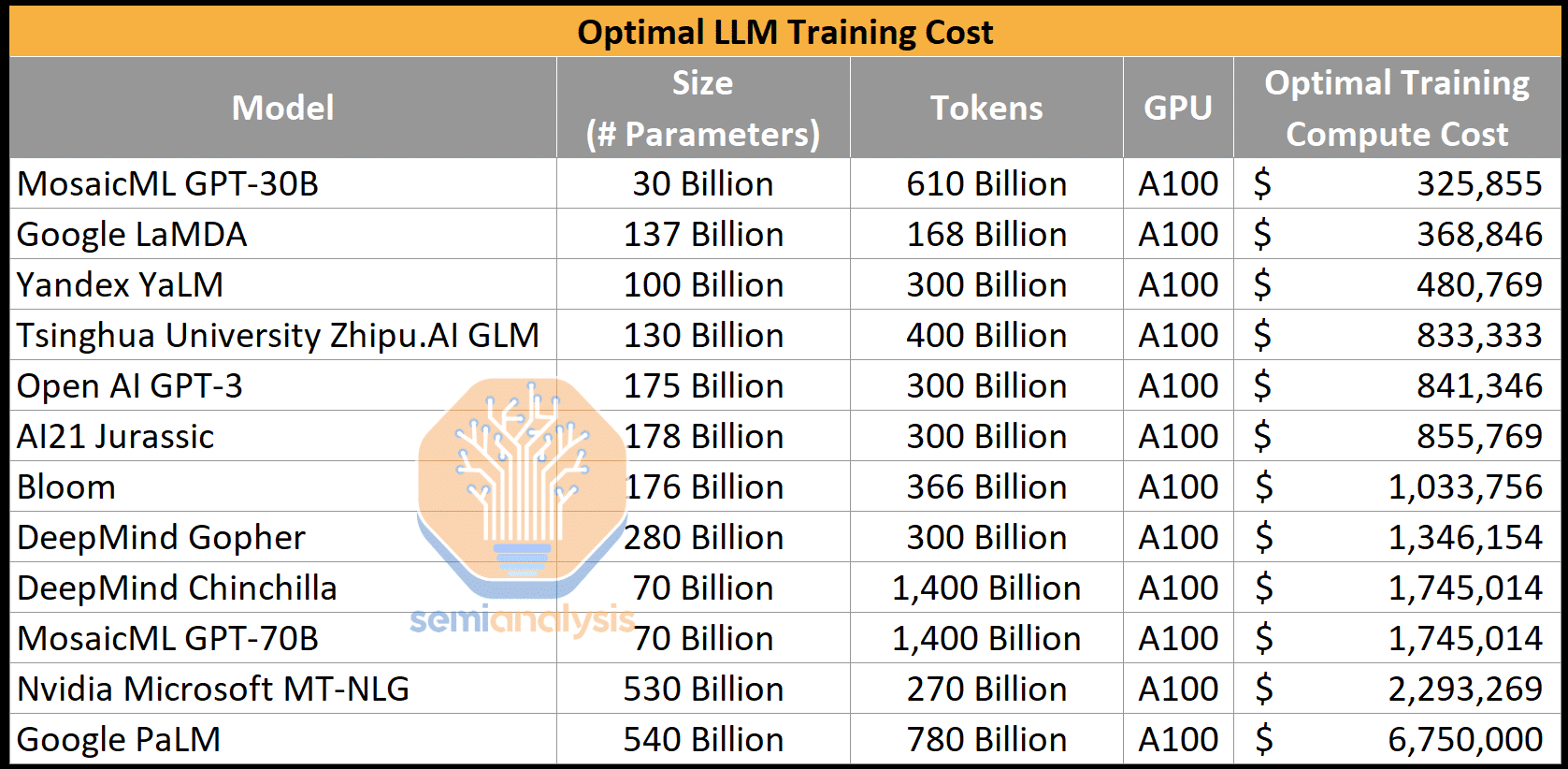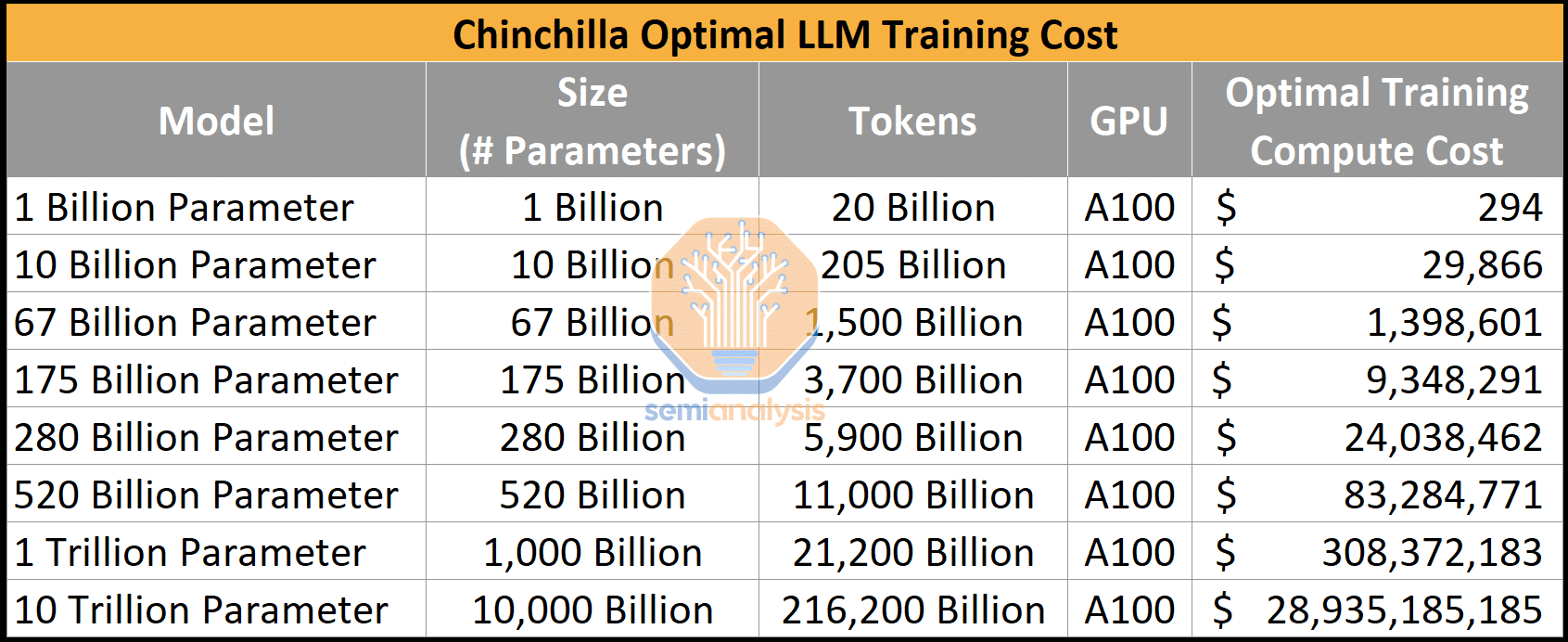Will applying AI and NLP to online search and content creation turn your digital marketing strategy on its head? There are ample reasons to think that will be the case in the near future. AI and NLP will significantly impact marketing as did the Internet, the World Wide Web, and Social Media. You must be prepared if your company or organization depends on Internet searches to attract and support customers.
As with any significant change, updating your SEO and content marketing strategies will not be a walk in the park. If you need help or have questions about how AI and NLP will affect your digital marketing strategy, give us a call or fill out the contact form. We will be happy to show you what we can do for you with a no-obligation zoom call at a time convenient to your schedule.
Table of Contents
- Definition of Terms
- How will internet searches be conducted in the coming age of AI-empowered search
- How is the SERP page likely to evolve
- Restarting the search engine wars
- What are some likely impacts of the new chatbot interface and SERP
- Digital Marketers must adjust due to the coming chatbot search tsunami
- Raising the bar on content quality
- The Potential pitfalls of AI Chat Search
Definition of Terms
First, let’s formally define some important terms. You should know that these technologies are equivalent to the Internet and web maturity level circa 1998. They are on the upswing regarding abilities and applications but are far from being mature and fully scaled. This is good news for digital marketers, SEO practitioners, and content creators. We can prepare for the upcoming changes if we adjust our strategies now.
What is AI (Artificial Intelligence)?
According to britannica.com, AI is “The ability of a digital computer or computer-controlled robot to perform tasks commonly associated with intelligent beings. The term is frequently applied to the project of developing systems endowed with the intellectual processes characteristic of humans, such as the ability to reason,”
AI is not new; we have been applying and using it for years. However, it had been primarily relegated to a keyboard replacement or call center operator role. As of a year ago, even users of SIRI, Alexa, or Google Assistant were getting the exact information they would receive if they had typed the same words on their PC when using a search engine. Sure, it was cool and convenient to talk instead of type and listen rather than read, but the results were the same and we received a voice answer or list of information sources.
As discussed below, artificial intelligence has rapidly gained capabilities over the last few years. It has now grown to a capacity and scale that a whole new realm of applications is within its abilities. Of course, there are still cost and scale limits, but those will be addressed as demand and revenue move to AI enterprises.
What is NLP (Natural Language Processing)?
Wikipedia defines NLP as “an interdisciplinary subfield of linguistics, computer science, and artificial intelligence concerned with the interactions between computers and human language, particularly how to program computers to process and analyze large amounts of natural language data. The goal is a computer capable of “understanding” the contents of documents, including the contextual nuances of the language within them.”
For all of its problems, human intelligence does an outstanding job (although our significant others may disagree) of including context and an understanding of people as individuals when interpreting the whole meaning of a sentence. Historically this has been a weakness of computer voice applications. Even in the narrow confines of an automated call center, it is common to get off script and enjoy the wait to talk to a “real human” to address our needs.
This, however, is beginning to change. The Wall Street Journal recently published an article about a call center AI automation system HomeServe USA Corp. implemented, it not only answers more than 11,000 calls a day but also monitors the live operators and gives them feedback and direction.
What is a chatbot?
Database and software house Oracle defines a chatbot as “At the most basic level, a chatbot is a computer program that simulates and processes human conversation (either written or spoken), allowing humans to interact with digital devices as if they were communicating with a real person. Chatbots can be as simple as rudimentary programs that answer a simple query with a single-line response, or as sophisticated as digital assistants that learn and evolve to deliver increasing levels of personalization as they gather and process information.”
While the chatbot that has the most buzz lately is ChatGPT, which has passed a state bar and medical exam, chatbots, in general, have been growing in ability and application for some time. They are now reaching a level of sophistication where some users have reported feeling romantically attached to a chatbot. See this Vice Article, for example. Indeed, there are many stories of users working on getting a chatbot off-script into seemingly human relationship territory. The feedback you receive from a chatbot is becoming more and more human appearing. Famously a Google engineer was fired for stating that their chatbot was sentient.
How will internet searches be conducted in the coming age of AI-empowered search?
The search will be more conversational, continuing the trend that began with smartphone helper apps. Gone will be the days of a desktop user typing “fix snowblower pull cord,” clicking on one or more items in the SERP’s (Search Engine Results Page) presented links and hoping for the best. While the results may contain links covering multiple digital channels (think web, YouTube, and social networks) the results are still keyword driven. The search query keywords provide some indication of the searcher’s intent but do not provide much context guidance for the search engine.
Chat-based search will interact with the users. For example, the search chatbot would logically ask for the make and model of the snowblower. This would allow it to give more relevant search results. A further follow-up question would be; do you want your snowblower repaired or try to fix it yourself?
Suppose the user uses a microphone and speaker device, smartphones, laptops, tablets, or PCs with remote work devices. In that case, which is about everyone, AI speech recognition will relieve the searcher of the burden of typing.
We will likely see far fewer SERP link clicks as the search chatbot will help the user hone in on the most relevant content. The searcher will also attribute much higher credibility to the presented information. As we can see from Bing’s previews, the SERP page itself will look far different than it has in the last 20 years.
Because the interaction with the search engine will seem much more human, I believe that searchers will feel more confident that the search engine understands their needs. This will have profound effects on digital marketing strategy. Digital marketers will be competing for fewer search impressions. It is likely that, in effect, the only SERP positions that will count will be the first page ranking we have been aiming for all along but realize may not be achievable for every website.
Why do I think that there will be fewer search clicks? Let’s do a thought experiment. Suppose you are staying in a hotel in the town of a family friend. You decide you would like to have pizza for dinner. Scenario one is that you get your smartphone and say best pizza restaurant. You will receive a SERP page with a list of restaurants sorted by distance and customer rating. You will probably click on at least 3 or 4 to choose your final selection.
However, scenario two is that you call your friend in town, let’s call her Ellen, and ask her, “who has the best pizza in town?” If she says “Luigi’s on Elm Street”, my guess is that is where you will have dinner. I believe that a similar thing will happen with chatbot search. After your conversation, you will feel that the recommendations received are your best choices, and in effect, you will be selecting from a pre-filtered result set. Of course, this has always been the case in SERPs, but you have had more impression opportunities as a digital marketer.
How is the SERP page likely to evolve?
We are all familiar with the “classic” SERP page. It consists of your query and the number of results returned, followed by a list of links featuring organic and paid advertising results. In addition, it may feature an answer section and perhaps images related to the search. Of course, we have all been competing for those page-one SERPs by employing our digital marketing efforts.
You will note several drastic changes as you look at the beta SERP images below. First, the links list is in the Bing example, but with only the domains—no 160-character meta description. In the Google Bard example, there are no links whatsoever. (I think this will change as both parties need to continue monetizing the search page.)
Conversational or chat-based searching.
With the advent of sophisticated chatbots, digital technologies are advancing toward human-like behavior. If you have not had an opportunity to try one, do so. The experience is, at the same time, both unsettling and enticing. When well done, the experience is genuinely conversational. One of the primary benefits of this conversational approach is that instead of refining your search by clicking on suggested links after reading the meta descriptions, iteratively refining your search phrase (keywords) until you get the information you seek.
Conversational search relies not on a list of links but a verbal or textual description of the answer to our questions. If the answer is not what we need, or the chatbot does not correctly understand the question, we interact conversationally to get the information we need. We may not click on a referenced link or check out the attributions at that point. In any case, we will likely click far fewer website links. Of course, this will also reduce the number of website search impressions.
Rapid uptake is likely
According to Microsoft, over one million people signed up for the new Bing preview in the first two days after the product announcement. As of February 24, 2023, they have granted access to more than one million users from 169 countries. I am sure that the users are not all AI researchers! Many of the users are just curious, but this does demonstrate the level of interest in a new form of internet search. We can expect rapid uptake for this technology as more people become aware of the power of AI to search and find relevant information quickly.
We can get a clue of the rapid uptake in interest in AI Chatbot use by looking at traffic to ChatAPT. According to Wikipedia, ChatGPT was launched on November 30, 2022, by San Francisco–based OpenAI, the creator of DALL. E 2 and Whisper AI. The service was launched as initially free to the public, with plans to monetize the service later. By December 4, 2022, ChatGPT already had over one million users. On February 1, 2023, they launched a $20 per month plus plan as a first step toward monetization.
According to blog posts and press reports, there are examples of the chatbot Bing reacting in unusual and even bizarre ways, and there are also a lot of reports of how well it is working.
Microsoft and Google will overcome the worst of their chatbot defects over the next few months and then enter into continuous improvement and scaling. If, and I believe this will be the case, the search results delivered are quick and convenient to access, and the responses received are accurate and helpful, there will be a rapid uptake in user volume.
It is human nature to expend the least amount of effort that will produce acceptable results. Therefore, if the user’s chatbot search experience is positive, and talking to your search engine is easy, that will become the dominant search method.
Restarting the search engine wars
For many years Bing has been the “Clippy” of search. Google has dominated search since the year 2000. Twenty-three years is a long time, an eternity in Internet time, and it is easy to assume that search market share will remain static. However, I do not believe that will be the case. With new technologies, new ways of thinking, and changing expectations, there can be mass changes in Internet user behavior. For example, Friendster -> MySpace -> FaceBook -> Tik Tok comes to mind. As marketing specialists, we have all seen momentum become inertia. While I am not suggesting that Google has become moribund, leaders have more to lose, and followers have more to gain. In this case, Alphabet has a competitor in Microsoft that has, and can continue to devote billions of dollars to research and scaling and is motivated to do so.
There is also the possibility that this will not be a two-horse race. Since some of the base concepts and intellectual property are open source or available to license, there may be hybrid search engines. These sites will power their presentation level with SAAS AI and Chatbot tools. You may even find search engines targeting specific demographics and worldviews.
Will Bing be relevant for SERP tracking?
As a digital marketing strategy consultant or an SEO guy, I am looking at some significant blind spots. For so long, Google’s search domination has been so overwhelming that the bread and butter tools we use to analyze our customer content marketing strategies do not even track Bing search placement. That is correct; SEMRUSH, SERPSTAT, SPYGU, and AHREFS, which we use every day to assess if our customers are reaching their target audience, do not track Bing search result placement for keywords. To the extent that search keyword research will continue to be relevant, this could be a big issue. This will especially be the case if each search engine does not rank content equally, which is quite likely.
Therefore, the digital marketers’ tools used to craft and monitor digital strategy may become more complex. In the same way that traditional advertising has been impacted by changes in their prospect’s behavior and expectations, we can also look forward to changes. We may find ourselves in a place where we have to know how our prospects find information and where they find it. Imagine tracking the search volumes and click rates on the target keywords for multiple search engines!
What are some likely impacts of the new chatbot interface and SERP?
Fewer search impressions
There will be fewer search impressions. Since the searcher will be refining their “search term” with a chat session rather than trying a series of progressively refined searches, there will be, by default, fewer meaningful search impressions. Even if the chatbot is in a sidebar and a traditional SERP list is on the left, the focus will be on the chatbot conversation. Therefore, even if the search impressions are there, they will not represent the opportunity that they currently have. From a tracking standpoint, digital marketers will see a decrease in their click-through rates.
Fewer search clicks
It also stands to reason that fewer search impressions will result in fewer search clicks. I think that this will be due to what I call “conversational result bias”. That is, there may be higher confidence in the recommended link shortlist shown by the chatbot sessions than in a longer, less focused link list. Why do I think that this will be the case? Let’s use the example cited above again. Suppose you are visiting your friend in her new home, let’s say, Cleveland. Let’s assume you arrive in town too late to visit this evening but are hungry. There are multiple ways to find a pizza restaurant near your hotel. You can do a search on your smartphone, ask for a recommendation from the front desk, or call your friend Ellen and ask for her opinion. Which of the suggestions you receive will you believe to be the most credible?
Here is part of a recent new Bing chat session. As you can see, the natural response is to reply to the search engine’s question or comment rather than click on a link. Also, notice the “Learn more links below each answer; they only have a domain name with a hover box that shows the page title and site name.
Digital Marketers must adjust due to the coming chatbot search tsunami.
Undoubtedly, digital marketing campaigns must change to address the coming changes. Unfortunately, we don’t know how search engines monetize the new technology. We can be sure that search engine marketing (PPC ads) will continue to be part of the mix. However, since the current chat-enabled beta sites are not showing their paid results, I will focus on content marketing campaigns and SEO optimization of said content.
A Chatbot does not have original thoughts so….
At its core, an AI Chatbot is a neural network that applies deep learning, AKA “machine learning”, and AI research. While they will do their best to determine the searcher’s intent and associate almost unimaginable quantities of data with providing a helpful answer, they are not and should never be creative. This means that they will rely 100% on the data provided to them and available in their databases.
Some of the examples we have seen seem to show creativity. For example, this user had ChatGPT write a WordPress Plugin for his wife’s blog. It did it in 5 minutes, and it worked. He then told ChatGPT to make some changes; again, it could modify the plugin it had written. At first blush, this seems like an example of creativity. However, a more accurate description is that is understood the plugin requirement, the PHP language, and the structure of a WordPress plugin.
Here is an example of the new Bing chat-based search. In this case, I asked questions about topics discussed in this article. As you can see, each bit of information has a superscript number that links to the source of information. (I have no idea if Google will do the same and if they will count as “impressions” in Google Analytics).
Again, two crucial points, search engines do not create data, and a citation or, even better, a “learn more” link will be the new search marketing gold. So from that aspect, the best digital marketing tactic is to create quality, comprehensive SEO-optimized content so that both search engines and human visitors can find and understand it.
Then there is the accuracy factor. Let’s have a little fun.
Would the result have appeared if I created a page on my website extolling my mega “stud muffin-ness”? In this case, Bing referred to a past Arizona politician rather than myself, even though I was logged in as myself. I am unsure if I am relieved or disappointed that Bing did not connect me as a logged-in user to the search query.
Raising the bar on content quality
Content length and topic coverage
From what I can determine, current chat-powered search engines rely on source material that closely matches their understanding of the searcher’s intent. This is as it should be. However, since any chat-based search is much more likely to be based on questions rather than keywords, online marketing content must anticipate and respond to as many questions and concerns revolving around your product or service as possible.
Writing narrow and deep content will be the most effective digital marketing strategy. Traditional marketing content often focuses on the page’s visual appearance and less on the content. I know this is a battle I fight with customers weekly. The complaint is, “I hate long pages, and no one will read all of this.” I remind them that there is another way of assuring that the page never gets read: by having content that will never appear in search results in the first place! While I understand that a human being may look at web pages differently than an AI program, it is the AI program that will decide what the searcher will see.
If you care about website traffic as a digital marketer, you cannot ignore the computer systems that are bringing you your traffic. Assuming that you do not wish to rely 100% on Google ads, you will need to generate organic search traffic, and the only way to do that is to create quality, comprehensive content.
This means that you will need a laser focus on the needs of your target audience. Whether your target audience is existing customers that you need to service or attract new prospects, you will need to try to understand their pain points and needs. Of course, you will still need to keep an eye on your competitors and many other things, but it all will boil down to content, content, content.
So suddenly, yesterday’s 750-word blog post is today’s 2000-word post. No problem, right? You will increase your copywriting budget by 300% or do the same for your digital ads and hit the golf course! OK, that might be a problem. So, what is the solution? Longer is not better unless longer is better. This is, of course, true of all online channels. For example, no one should consider sending 5000-word messages in their email marketing campaign. The same is true of social media posts. Your digital communication must fit the channel and the device. This presents content structure issues when for instance, your visitors are using mobile devices.
AI authoring tools
Fortunately, the same AI technologies that have created the need for longer content also help meet the demand for drastically longer content. It is critically important that our goal is not just words, however. This article is going to end up somewhere north of the 5000-word ballpark. If you have had the stamina to read to this point, it is because you found the information interesting and relevant to your needs. Manually doing all the research and copywriting takes a long time. While everyone has their own work style, mine relies on a lot of quality time with search engines. But I do appreciate some help when appropriate. AI authoring tools allow me to leverage the best available research to craft unique content. I use them for inspiration, specific fact-checking, and overall structure ideas. They may not be up to the same standard as human authors, but they constantly improve.
In writing this article, I am using five AI tools. Here is a brief introduction to each.
Surfer SEO
Surfer is a content creation platform that helps your content compete with the highest-ranking content for the search keywords that you are targeting. In effect, it takes some of the work out of doing the search engine optimization by suggesting keywords, questions to answer, and even suggesting the word count and the number of images used in your article or blog post. As you write, you will see your content’s SEO score and the target score you need to reach to rank well in SERPs.
According to Surfer, “Surfer provides over 500 ranking factors in combinations of specific page elements like title, headings or paragraphs content with modifiers available below the chart – outside links toggle that can include or exclude anchors from analyzed content.”
While Surfer is aimed at SEO-optimized content creation, it also provides some help with technical SEO as it helps you remember items like image alt tags, etc., that are easier to see in its browser-based interface than they would be if you were using Word, for example.
Jasper
According to the Jasper website, “Jasper is the generative AI platform for business that helps your team create content tailored for your brand 10X faster, wherever you work online.”
It is quite a bit short of a 10X speed acceleration, but it does cut time from content creation.
If I ask Jasper the same question using the same keywords as I did in Surfer, Jasper will generate content that is personalized for my brand using AI. The results (which I can customize) will include the same page elements (such as title, headings or paragraphs), but with modifiers tailored to my needs.
Here is its answer to the question using its “Listicle” template, one of my favorites with a selection of 6 list items.
- Jasper is an artificial intelligence software company that was founded in 2014 by a team of experts in machine learning and natural language processing.
- The company’s mission is to make it easy for businesses to get started with artificial intelligence and to provide them with the tools they need to be successful.
- Jasper provides a number of different products and services, including a platform that allows businesses to build and deploy AI applications, a suite of pre-trained models, and a consulting service.
- The company has raised over $100 million from investors such as Google Ventures, Andreessen Horowitz, and Microsoft.
- Jasper has been used by companies such as Coca-Cola, Samsung, and Huawei to develop AI applications.
- In 2018, Jasper was acquired by Salesforce for $150 million.
Grammarly
According to the grammarly.com website, “Grammarly’s product makes sure everything you type not only upholds accurate spelling, punctuation, and grammar, but is also clear, compelling, and easy to read. Our suggestions help identify and replace complicated sentences with more efficient ones, refresh repetitive language, and strengthen your writing to say what you really mean.”
Grammarly provides meaningful help with grammar and spelling and some sentence structure assistance. It will suggest possible sentence rewrites, and they are often quite good. However, it will also suggest changes that do not make sense or would change the sentence’s meaning. So, I think it is a great tool but does not replace the need for a good copywriter.
The Grammarly Editor is supported on Google Chrome 57+, Safari 10+, Firefox 52+, Microsoft Edge 14+, and the new version of Edge based on Chromium. Note: Grammarly works best with the latest stable versions of browsers and operating systems; therefore, we suggest you update your software regularly.
So in effect, is integrated with Surfer and Jasper.
Copyscape
Copyscape is a tool that checks to make sure that your content is original. It will also let you find websites that have copied your content. Copyscape lists reasons you should care about this here.
If you have a premium account that is very reasonably priced on a usage basis, you can check your content by its URL, paste it to the site, or import it from a Word doc.
As explained here “Using AI content generation tools is not against Google’s policies. However, avoid publishing automatically-generated SEO-optimized content from AI/automation tools. Instead, leverage them to create only the essential parts of your content, review them, and then use the content to create high-quality and helpful posts for your audience.”
As Originality states on its home page “Your needs, as a serious web publisher, for a plagiarism checking and AI detection tool are unique. Yet, all the existing plagiarism checking tools are built with Academia in mind.
Originality.AI is built by a team of content marketing and GPT-3 AI experts that deeply understands your needs and includes features like Team Management (no more sharing your login), Full Site Scan (coming soon), Auto-Billing, Scan History by User and most importantly an AI Writing Detection tool.”
So, while AI or Chatbot-generated copy is not penalized by Google, there is no upside to publishing content with deep AI markers. Remember that anyone can use ChatGPT; why do they need your content if they can get the same thing themselves?
The Potential pitfalls of AI Chat Search
Answer Acceptance Bias; users may substitute AI answers for their due diligence.
AI Answers are becoming increasingly prominent today, but it is essential to be aware of the Acceptance Bias that can occur when we allow AI-generated answers to become a substitute for our due diligence. AI answers should always be fact-checked and verified before being accepted as fact; AI isn’t perfect, and incorrect AI responses have had severe consequences for those who blindly took them as truth. Therefore, we must ensure that AI answers don’t become a substitute for our judgment and thorough fact-checking.
Need proof? An incorrect answer during a Google Bard demo in Paris knocked $100 Billion off their stock value.
Political, Cultural, or Other Biases
In an ideal world, both search engines and AI would exhibit neutrality in the results they return. However, search engines and the AI algorithms they employ are written by humans who have opinions and exercise judgment when evaluating truth. This bias is far more than just the text returned. As it turns out, the truth is nuanced.
The Wall Street Journal recently published an interesting article titled AI in the Workplace Is Already Here. The First Battleground? Call Centers. They cite an example of a home warranty customer who wants to change her policy. The AI-assisted auto attendant asks questions to help route the calls to live operators. For example, the auto attendant asked the woman the age of her home, which is a legitimate question I am sure we can all agree. However, when the call was forwarded to an operator, it was with the note that the policy should be expanded to cover indoor and outdoor plumbing. When the operator spoke with the customer, he could pick up that the customer truly could not afford a more expensive policy, so he did not recommend it.
So, which was “truth” in this case, should the customer upgrade her policy as she has a need, or should she not as it was not affordable for her?
Barriers to adoption
There are several barriers to adoption. Two factors are the funds needed and the current state of neural network development. All AI depends on the training data the neural networks use, and, at some level, they suffer from weak AI.
The abilities of current AI systems
Now I’d like to tell you a story. I grew up on a Wisconsin dairy farm, and the neighborhood memory lasted for generations. The story is about a local farmer who took advantage of the fact that the town of Iron Ridge, WI, had more taverns than churches. Even though the events happened circa 1900, the farmer could over-imbibe and rely on his conveyance to reliably take him safely home without any input from him other than climbing in. No matter the time of day or night, the weather, or other traffic on the three-mile trip home. His conveyance was, of course, a horse-pulled farm wagon.
So, while Tesla’s auto-driving technology is impressive, it still runs into the back of fire trucks. It is wise to consider that the chat search experience that seems so incredible has a long way to go to be as nuanced as rigorous human reasoning.
The cost to scale AI
The cost to train and scale modern AI systems is mind-boggling. Step briefly into my electrical engineering and computer science background with some light reading. In this article, they discuss the optimal training costs of many of the current advanced AI models. If you want to skip the details found here, look at the tables they feature.
This first chart shows the optimal training costs according to the number of parameters.
The costs are based on using Nvidia’s A100 GPU, the current market leader as a computing and memory platform. As you can see, the numbers are scary. This will limit who can offer these tools. Even with anticipated hardware cost reductions, the few who can play in this market need to monetize their work rapidly.
Barriers to utilization
Another possible barrier will be that of adoption. Right now, ChatGPT and the new beta chatbot-enabled search engines have a ton of “buzz” in the headlines. As mentioned above, millions have signed up for access and are impatiently waiting for a test drive.
However, their convenience and accuracy will determine their success once the novelty wears off. If they continue to make factual errors or are judged to have unacceptable biases, their acceptance in the marketplace could be held back by a significant amount.
Conclusion
I believe that for better or worse, digital marketers, website owners, and content creators. will have to be ready to compete for internet shelf space in an entirely new environment. If you would like to discuss how we can help you do that for your business, please contact us for a free zoom chat to discuss your unique needs.




